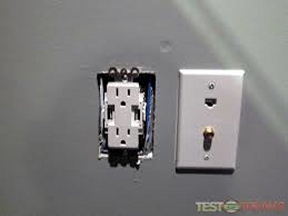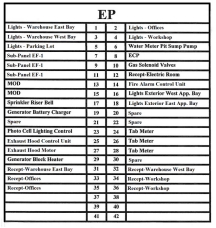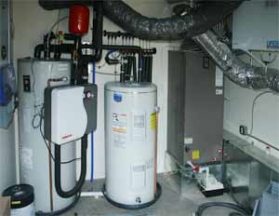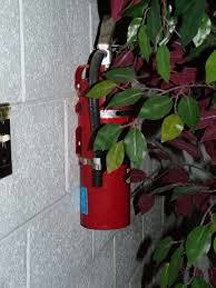Welcome to the City of Mason Fire Department Annual Fire safety Survey Program.
Complete Annual Fire Safety Survey Online Now
Download Annual Fire Safety Survey WorksheetThe City of Mason Fire Department would like to welcome you to our fire safety Survey Program. If you participated in this program last year, we thank you in advance for your continued participation moving forward. Your business has been assessed as having a lower fire risk and is therefore eligible for participation in this program. We believe this program will provide you with a more convenient way to keep your business safe while providing a valuable opportunity for the City of Mason Fire Department to collaborate with the business community in fire and life safety.
Safety Survey packets are available to initiate the annual fire safety assessment and include a cover letter, a “How to Complete Your Fire Safety Survey” page and a “Fire Safety Survey Worksheet” (SI-W) form. Please take the time to promptly survey your premises and complete the SI-W form in its entirety by marking the appropriate response selection (Yes, No or N/A) for each question. Completed worksheets are to be forwarded to the Fire Department by one of the four means listed below:
- Complete Fire Safety Survey Worksheet Online.
- Email the completed worksheet to: [email protected]
- Fax the completed worksheet to (513) 229-8545.
- Directly mail the completed worksheet to: City of Mason Fire Department, Fire Prevention, 6000 Mason-Montgomery Rd., Mason, OH 45040.
Should you have questions about the program, need assistance in completing forms or solicit clarification regarding the “Fire Safety Survey Worksheet” or program please contact Fire Prevention at (513) 229-8540 or by email at [email protected].
We hope this program will make efficient use of time and resources for both local business owners and the City of Mason. We appreciate our valued business partners and look forward to working with you in keeping Mason a safe place to live and work.
Thank you,
Bryan Brumagen
Fire Chief
Worksheet Questions & Descriptions
1. Is the building or unit numbers/letters visible from the street?
Building address and unit numbers should be maintained in good condition, free from fading, deterioration, etc. They should be clearly visible from the street and not blocked by landscaping, other signage, or displays. If applicable, units or suites should be clearly marked on or above front and rear doors.
2. Is there a minimum of 3-foot clearance around the on-site fire hydrant?
On-site hydrants should be free from obstructions, for example parked cars, signage, and landscaping for at least 3 feet around them in all directions. This allows for the attachment of fire hose and the proper and easy operation of the top valve of the hydrant.


3. Do all exit doors remain unlocked during business hours?
All doors which are marked with exit signage must remain unlocked and free from obstructions or impediments to their use from the inside at all times that the space is occupied.


4. Are the exit doors operable from the inside without use of a key or special knowledge?
All doors which are marked with exit signage must open without the need for unlocking them with keys, key codes, swipe cards, etc. when the building is to be evacuated. Secured openings used for exit, must be equipped to unlock when the fire alarm is activated or power is lost to the space.


5. Are illuminated exit signs fully illuminated in the normal and back up modes? Push the test button to determine back up functionality.
Illuminated exit signs are equipped with both a primary power source and back-up battery system. The lamps in the exit sign must function using both sources of power. Checking the primary power source lamps is done by viewing the sign under normal operation and verifying that both lamps are lit. If they are not, one side of the sign or both will be dim. To test the back-up power system and lamps, press the test button on the exit sign for 30 seconds and watch the lamps to see if they activate. If they activate, watch the lamps to see if their illumination fades over the 30 seconds of continues to shine brightly.

6. Do the emergency lighting units work properly? Conduct a test by pushing the test button for at least 90 seconds.
To test the emergency lighting power supply and lamps, press the test button on the emergency lighting unit for 90 seconds. Both lamps should light brightly and remain brightly lit throughout the 90 second test. If the lamps light dimly or not at all, the lamps, battery or fixture requires replacement.


7. Are exit aisles, hallways, stairways clear of obstructions?
All exit aisles, hallways, and stairs must be kept free of obstructions. These areas should be kept free of permanent or temporary installations or storage which would impede egress from served spaces. For example, dollies of product, mail carts, or stacks of boxes.


8. Are exit corridors, hallways, and under stairs free of combustible storage?
All exit corridors, hallways, and under stairs should be kept free of permanent or temporary storage of combustibles. Combustibles are defined as any material which will readily catch fire and burn, including but not limited to paper, cardboard, plastics, wood, etc.
9. Are all electrical outlets, switches, and junction boxes covered with proper cover plates?
All electrical outlets, switches, and junction boxes should have proper cover plates installed at all times. Exposed wiring can be an electrocution or fire hazard.


10. Are circuit breakers in panels labeled to identify the area protected?
Circuit breaker boxes should have clearly readable labels to identify the type of service, i.e. lights, outlets, equipment supplied and the location of the service being provided, for example, waiting room lights or kitchen receptacles.


11. Are extension cords in use as permanent wiring? Extension cords are not to be used in place of permanent wiring. They may be utilized to supply power to a single small appliance such as a fan, radio, or power tool.
The use of extension cords is limited to temporary use only. They can be used to supply power to a single portable piece of equipment only as long as the equipment is being used during the work day. For example, using an extension cord to power a drill or saw which is put away when the work is finished. They can not be used to power a piece of stationary equipment or permanent fixture.


12. Are power strips, with built-in breaker, plugged directly into approved wall electrical outlets? No power strip on power strip use.
Power strips or “surge protectors” must be plugged directly into a wall or floor outlet. They may not be plugged into an extension cord or another power strip to extend their reach, because the extra power drawn through the extension cord or power strip may exceed their capacity causing a fire hazard through overheating or a short circuit.


13. Are portable electric space heaters plugged directly into wall outlets and a minimum of 3 feet away from combustibles?
Portable electric space heaters may be used to provide supplemental heat as long as they are plugged directly into a wall or floor outlet, not into an extension cord or power strip. They must also be placed a minimum of 3 feet from any combustible materials, except carpeting.

14. Are equipment rooms free of combustibles? Combustibles are not to be stored in boiler rooms, mechanical rooms, or electrical equipment rooms.
BOILER. A closed vessel in which water is heated, steam is superheated, or any combination thereof, under pressure to vacuum for use externally to itself by the direct application of heat from the combustion of fuels, or from electricity or nuclear energy. The term boiler includes fired units for heating or vaporizing liquids other than water where these units are separate from processing systems and are complete within themselves.
BOILER ROOM. A room primarily utilized for the installation of a boiler.

ELECTRICAL ROOM. A room specifically used to contain or store electrical equipment and components for the purposes of power distribution to other areas of a building or grounds. i.e. water heater would not be considered a part of the electrical distribution equipment.
An electrical room is a room or space in a building dedicated to electrical equipment.
Electrical rooms typically house the following types of equipment:
- Electric switchboards
- Distribution boards
- Circuit breakers and disconnects
- Electricity meter
- Transformers
- Busbars
- Backup batteries in a Battery room
- Fire alarm control panels
- Distribution frames

MECHANICAL ROOM. A mechanical room is a room or space in a building dedicated to the mechanical equipment and its associated electrical equipment.
Mechanical rooms typically house the following types of equipment:
- Air handlers
- Boilers
- Chillers
- Heat exchangers
- Water heaters and tanks
- Water pumps (for domestic, heating/cooling, and firefighting water)
- Main distribution piping and valves
- Sprinkler distribution piping and pumps
- Back-up electrical generators
- Other HVAC (heating, ventilation and air-conditioning) equipment

Utility Room. While often containing similar equipment to mechanical and electrical rooms, the purpose of a utility room is not exclusively for the housing of mechanical or electrical equipment. They may also contain slop sinks, storage shelving, or work benches.
Combustible materials placed too closely to an appliance can ignite due to direct contact with flames or heating elements or radiant heat build-up on their surfaces. Combustible materials are defined as any materials which may ignite when a sufficient heat source is applied, i.e. paper, cardboard, fabrics, plastics, etc.


16. Is storage maintained a minimum of 2 feet below the ceiling? Maintain storage at least 2 feet below the ceiling.
Storage should be maintained in all areas a minimum of 2 feet below the ceiling surface, to prevent the interruption of sprinkler patterns in buildings equipped with fire suppression sprinklers. It also prevents damage to ceiling materials which may allow for the passage of heat, smoke, and fire into the void spaces above.
17. Are ceiling tiles fixed in place? This allows the ceiling to act as a heat collector for fire protection systems and to prevent the passage of smoke and fire.
In ceiling assemblies with removable tiles are the tiles fixed in place. This is accomplished with clips. In areas where the ceiling is part of a fire rated assembly, the use of tiles of special materials secured with clip is required to maintain a fire barrier.
18. Are there an adequate number of fire extinguishers? There should be no more then 75-foot travel distance to a fire extinguisher. Extinguishers should be an all-purpose ABC type-minimum U.L. rating of 2A-10BC.
19. Is the fire extinguisher firmly mounted to a stable structure, visible, accessible and ready to use? Free standing is not acceptable.
All fire extinguishers required for a particular occupancy type must be firmly mounted. The mounting method may be in a cabinet assembly or on a mounting bracket. The fire extinguisher(s) must be clearly visible without being obscured with stored items, interior decorations, furniture, plantings, etc. They must also be accessible and ready to use without requiring special tools or knowledge, for example not being wire tied to the mounting bracket which would require scissors or a knife to free them.


20. Has the fire extinguisher(s) been inspected and tagged to indicate a current annual inspection?
Fire extinguishers are required to have an annual inspection by a certified technician who will test them and recertify them for another year. After that inspection the technician will affix a dated tag to the fire extinguisher which will list the date of the inspection and indirectly give the date of the next required inspection (a year from the date marked on the tag). On the reverse side of the tag is usually a grid to record the required monthly inspection. The monthly inspection can be performed by any person in the occupancy that has been trained to do so. While recording of the monthly inspection on the tag is very convenient, it can also be recorded in a log, spreadsheet, or database, as long as the method chosen can be provided to the fire inspector who performs the periodic inspection of the occupancy.
21. Are batteries replaced in single station smoke detectors annually?
Smoke detectors, even those hardwired into the domestic power of an occupancy, are equipped with a battery to supply power in the case of a power failure. Those batteries require annual replacement per the code.
22. If there is a fire alarm system, has the system been inspected within the past (12) months by a state licensed contractor? If yes, attach a copy of the inspection report.
Fire alarm systems in commercial occupancies are required by code to have an annual inspection of the system and its components to ensure that everything is working properly. The inspection must be completed by a state licensed contractor who will give you a written report of their findings after completing the inspection. A copy of this paperwork needs to be attached to this form.

23. If there is a fire sprinkler system, has the system been inspected within the past (12) months by a state licensed contractor? If yes, attached a copy of the inspection report.
Fire suppression systems in commercial occupancies are required by code to have an annual inspection of the system and all of its components. The inspection must be completed by a state licensed contractor who will give you a written report of their findings after completing the inspection. A copy of this paperwork needs to be attached to this form.


24. Are compressed gas cylinders such as oxygen, acetylene, argon, nitrogen, and nitrous-oxide secured to a fixed structure or on carts to prevent them from falling? If yes, provide the name of the compressed gas and quantity of each.
Many safeguards have been put into place by cylinder manufacturers to keep the users of compressed gas cylinders from being injured by the cylinders or their contents should they become damaged. The leading cause for their damage is falling, which is why the code requires that they be secured in an approved manner and not free standing. They can be chained, strapped, or housed in a rack system. In the case of welding gases, they can be strapped or otherwise secured to a rolling cart. The key is to prevent them from being knocked over and having their valve knocked loose or off, creating a dangerous “rocket” propelled by potentially flammable gases.


